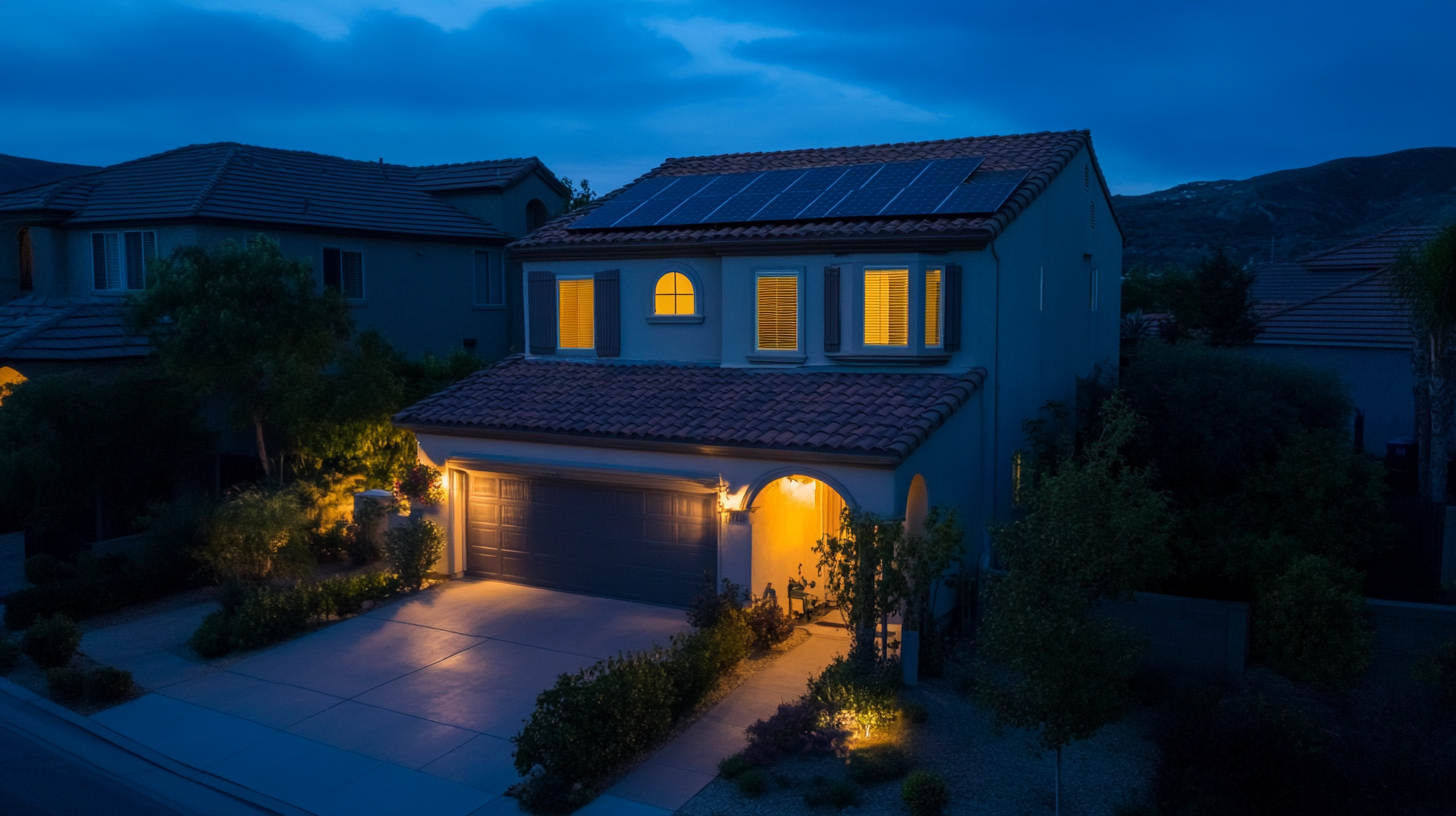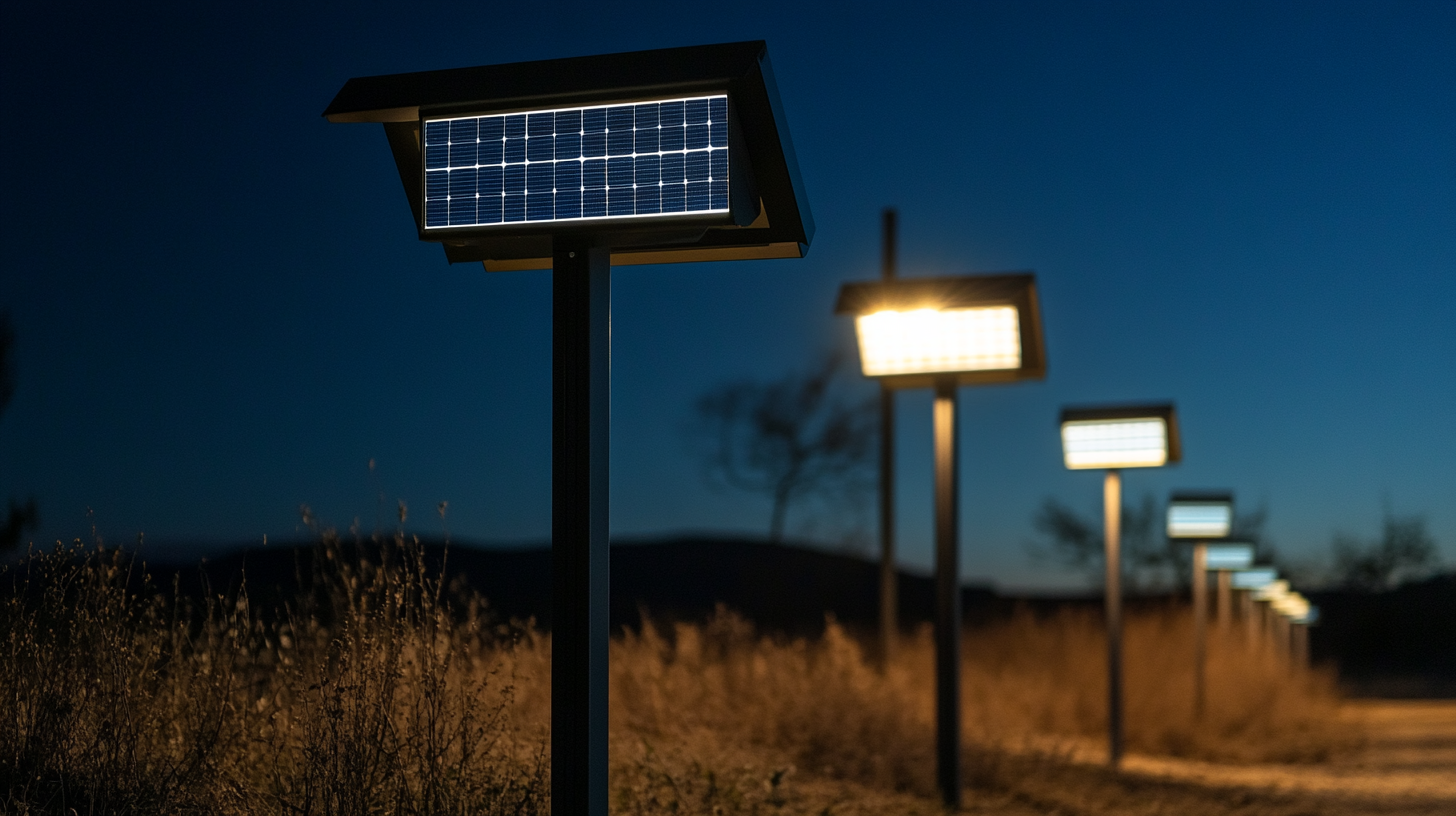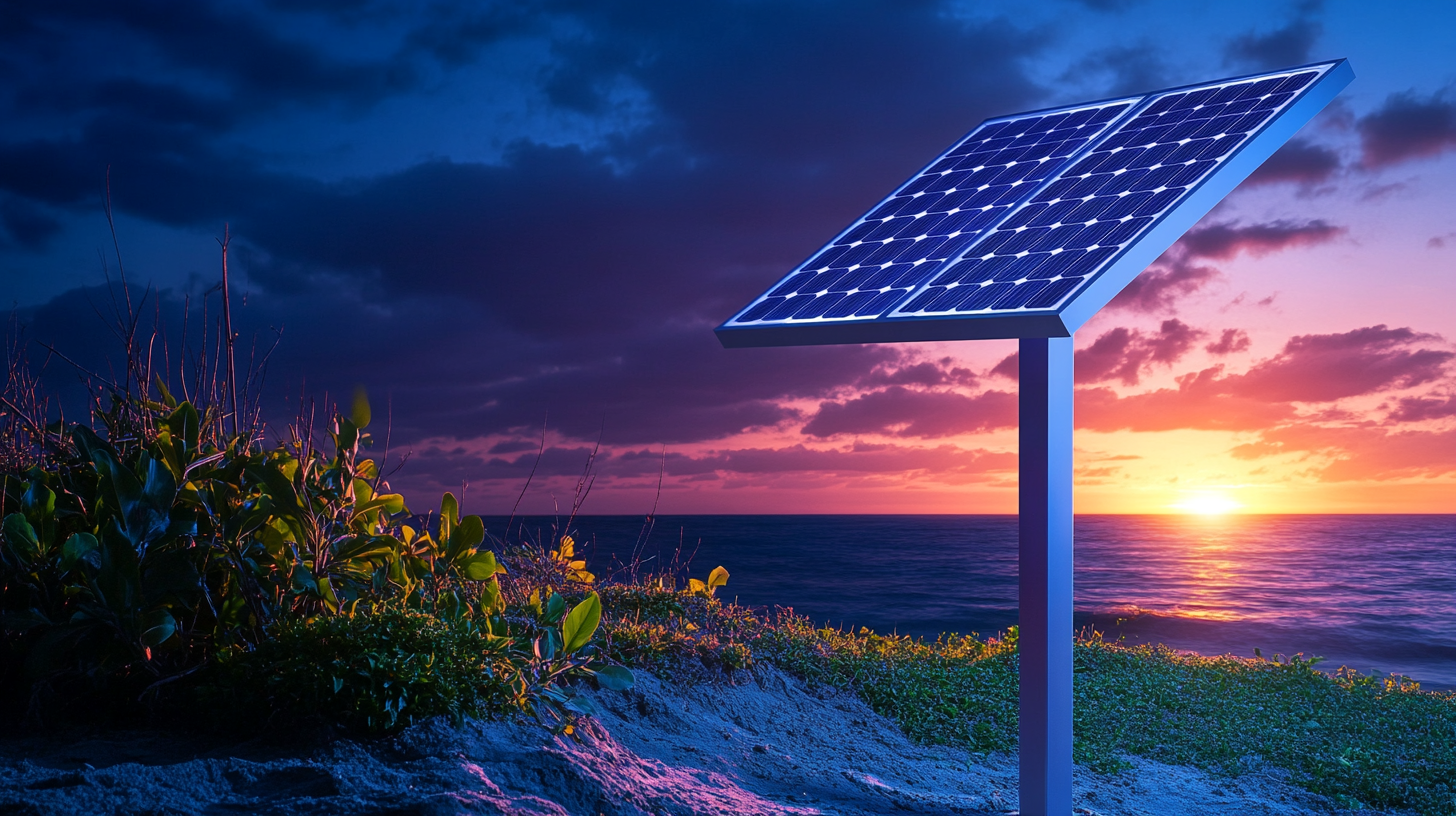“7 Reasons Why LED Solar Lights are Revolutionizing Global Outdoor Lighting Solutions”
As the world increasingly shifts towards sustainable energy solutions, LED solar lights have emerged as a transformative force in outdoor lighting. According to a report by Grand View Research, the global solar lights market is expected to reach USD 10.6 billion by 2025, driven by advancements in solar technology and heightened awareness about energy conservation. LED solar lights, combining the efficiency of LED technology with solar power, offer a compelling alternative to traditional lighting methods. This innovation not only reduces energy consumption but also lowers carbon footprints, making outdoor environments more environmentally friendly.
Moreover, the rise of LED solar lights is supported by a growing trend of urbanization and outdoor space utilization. The International Energy Agency highlights that nearly 55% of the world's population currently resides in urban areas, a figure expected to rise to 68% by 2050. This urban expansion necessitates efficient and sustainable outdoor lighting solutions. LED solar lights stand out in this context, providing reliable illumination without the dependency on grid electricity, thus revolutionizing the way cities approach outdoor lighting in both residential and public spaces.

The Energy Efficiency of LED Solar Lights Compared to Traditional Lighting
The energy efficiency of LED solar lights is transforming the landscape of outdoor lighting, providing a sustainable alternative to traditional lighting solutions. With the global solar lights market projected to reach USD 14.2 billion by 2031—almost double its valuation of USD 8.1 billion in 2021—the transition toward more energy-efficient options is clear. LED solar lights not only harness the power of the sun, but they also significantly reduce energy consumption. Unlike conventional lighting, which can squander up to 90% more energy, LED solar lights are designed to operate on minimal power, making them the smart choice for environmentally-conscious consumers. The shift toward LED solar lighting systems is driven by their ability to deliver bright, high-quality illumination while simultaneously reducing carbon emissions. As commercial LED lighting technologies continue to advance, businesses are discovering that investing in these systems can lead to dramatic cuts in energy usage, further aligning with global sustainability goals. The rising demand for energy-efficient outdoor lighting is prompting many to consider solar-powered solutions that can operate off-grid, providing reliable lighting while preserving natural resources. As we embrace this revolution in lighting, it’s important to acknowledge how LED solar lights not only enhance outdoor spaces with stunning illumination but also contribute to lowering overall energy costs. This transition is a crucial step in fostering a greener planet, ensuring that outdoor lighting can now be both bright and environmentally friendly.

The Environmental Impact of Using Solar-Powered Lighting Solutions
The integration of solar-powered lighting solutions is pivotal in addressing global environmental challenges. One area experiencing significant transformation is in remote communities, where traditional energy sources are often unreliable or inaccessible. A recent intelligent lighting system powered by solar energy has been revolutionizing the daily lives and safety of inhabitants in remote areas, providing them with reliable and sustainable lighting that enhances security and community engagement. Research shows that solar lighting can decrease reliance on fossil fuels, mitigate carbon emissions, and contribute towards climate goals.
According to industry reports, the growth of solar energy is projected to accelerate, with renewable sources expected to account for nearly 50% of global electricity generation by 2050. This shift is further bolstered by significant projects, such as the U.S.'s largest solar energy initiative, which highlights the potential for large-scale solar solutions to deliver both power and renewable energy jobs. Such advances illustrate not just environmental benefits but also economic opportunities for communities globally.
Moreover, studies have shown that the adoption of solar lighting in urban areas can play a crucial role in the development of smart cities. By integrating intelligent renewable energy solutions, municipalities can achieve greater sustainability and efficiency. This not only reduces the environmental footprint but also fosters innovative approaches to urban planning and infrastructure, ensuring communities thrive in a greener, more resilient future.

Cost Savings Over Time: Analyzing the Economic Benefits of LED Solar Lights
In recent years, LED solar lights have emerged as a transformative solution for outdoor lighting, significantly altering the way we view energy consumption and savings. One of the key economic benefits of these innovative lights is their ability to drastically reduce electricity costs. Unlike traditional lighting options, which rely heavily on grid power, LED solar lights harness energy from the sun, allowing users to eliminate or vastly reduce their dependence on electricity for outdoor illumination.
In addition to the initial cost savings on electricity bills, LED solar lights are designed for longevity and minimal maintenance. Traditional outdoor lights often require frequent bulb replacements and maintenance trips, which can accumulate additional costs over time. Conversely, LED solar lights boast a lifespan of several years, minimizing the need for replacements. This long lifespan, combined with the low maintenance requirements—since they are solar-powered and typically include built-in sensors—means that homeowners and municipalities can allocate funds elsewhere, further enhancing the economic advantages of this lighting solution.
Moreover, the environmental benefits of LED solar lights translate into economic benefits by fostering sustainability practices. As more communities adopt these solutions, they contribute to reduced carbon footprints, potentially opening doors for government incentives and rebates for renewable energy projects. This holistic approach not only supports financial savings for individual users but also aligns with broader societal goals of sustainability and environmental responsibility, underlining the profound impact of LED solar lights on global outdoor lighting solutions.

Innovative Designs and Features of Modern Solar LED Lights
The advent of modern solar LED lights has marked a significant shift in outdoor lighting solutions worldwide. One of the key innovations in this technology is the integration of smart features that optimize energy consumption. According to the Solar Energy Industries Association, the efficiency of solar panels has improved dramatically, with some models now reaching over 22% efficiency. This advancement allows solar LED lights to harness sunlight more effectively, translating to brighter illumination at night while minimizing energy waste.
Another notable feature is the incorporation of motion sensors in many solar LED models. Studies suggest that outdoor lighting with motion detection can save up to 30% more energy compared to traditional constant lighting. This is particularly beneficial in public spaces where lights need to be on only when movement is detected, thus enhancing safety while significantly reducing power consumption.
Additionally, many modern solar LED lights come equipped with advanced battery storage solutions. Recent reports indicate that lithium-ion battery technology has made significant strides, offering a longer lifespan and quicker charging times. This innovation enables solar lights to operate efficiently even during long periods of overcast weather, ensuring that outdoor spaces remain illuminated when they are most needed.
The rise of aesthetic designs in solar LED lighting is also worth mentioning. With options ranging from sleek, contemporary styles to vintage-inspired looks, these lights not only serve functional purposes but also enhance the visual appeal of outdoor environments. As consumers increasingly seek environmentally friendly solutions that do not compromise on style, the demand for innovative solar LED lighting continues to grow, reshaping the outdoor lighting landscape globally.
The Growing Popularity of LED Solar Lights in Urban and Rural Settings
The rising popularity of LED solar lights in both urban and rural settings is a central phenomenon in the lighting industry. With the global LED lighting market expected to surpass $85.97 billion in 2023, driven by increasing environmental awareness, the demand for sustainable lighting solutions is on the rise. The compound annual growth rate (CAGR) for this market is projected to be around 10% from 2024 to 2032, highlighting a significant shift towards energy-efficient technologies.
In urban areas, cities like Jaipur are recognizing the advantages of LED solar lights in managing mobility and mitigating the urban heat island effect. This change is part of a broader trend where smart city initiatives are increasingly adopted to enhance sustainability and livability. In fact, the outdoor lighting market alone was valued at over $37.4 billion in 2023, with expectations of a CAGR exceeding 5.1% from 2024 to 2032, as more municipalities embrace integrated lighting solutions that are both efficient and eco-friendly.
Rural areas are also not left behind in this revolution. The flexibility and independence offered by solar-powered LED lights make them ideal for rural electrification projects while minimizing installation costs and environmental impact. Observing the global outdoor lighting market's growth, it becomes clear that LED solar lights are becoming essential in creating safe, illuminated spaces across various settings, shaping the future of outdoor lighting solutions.

